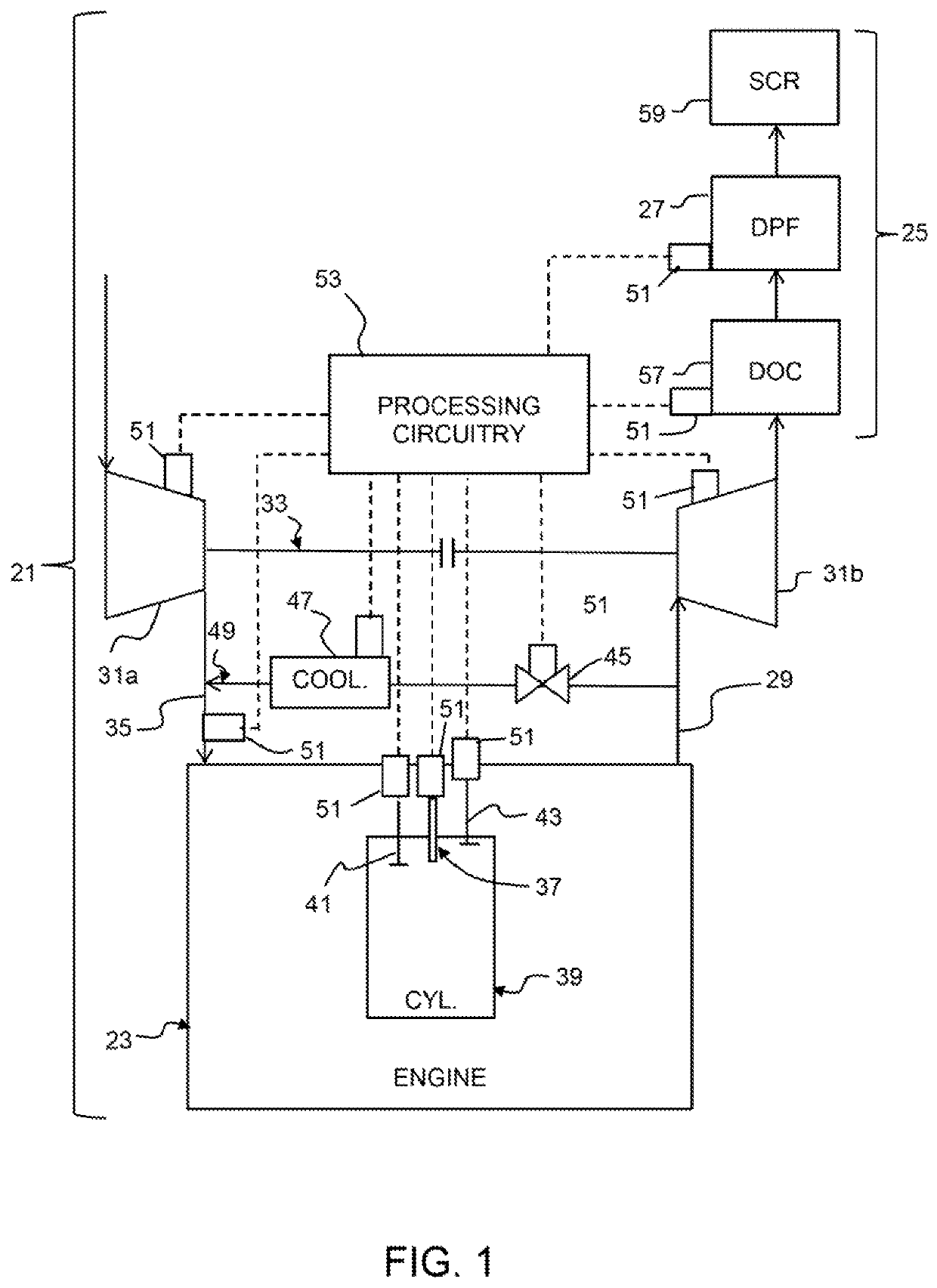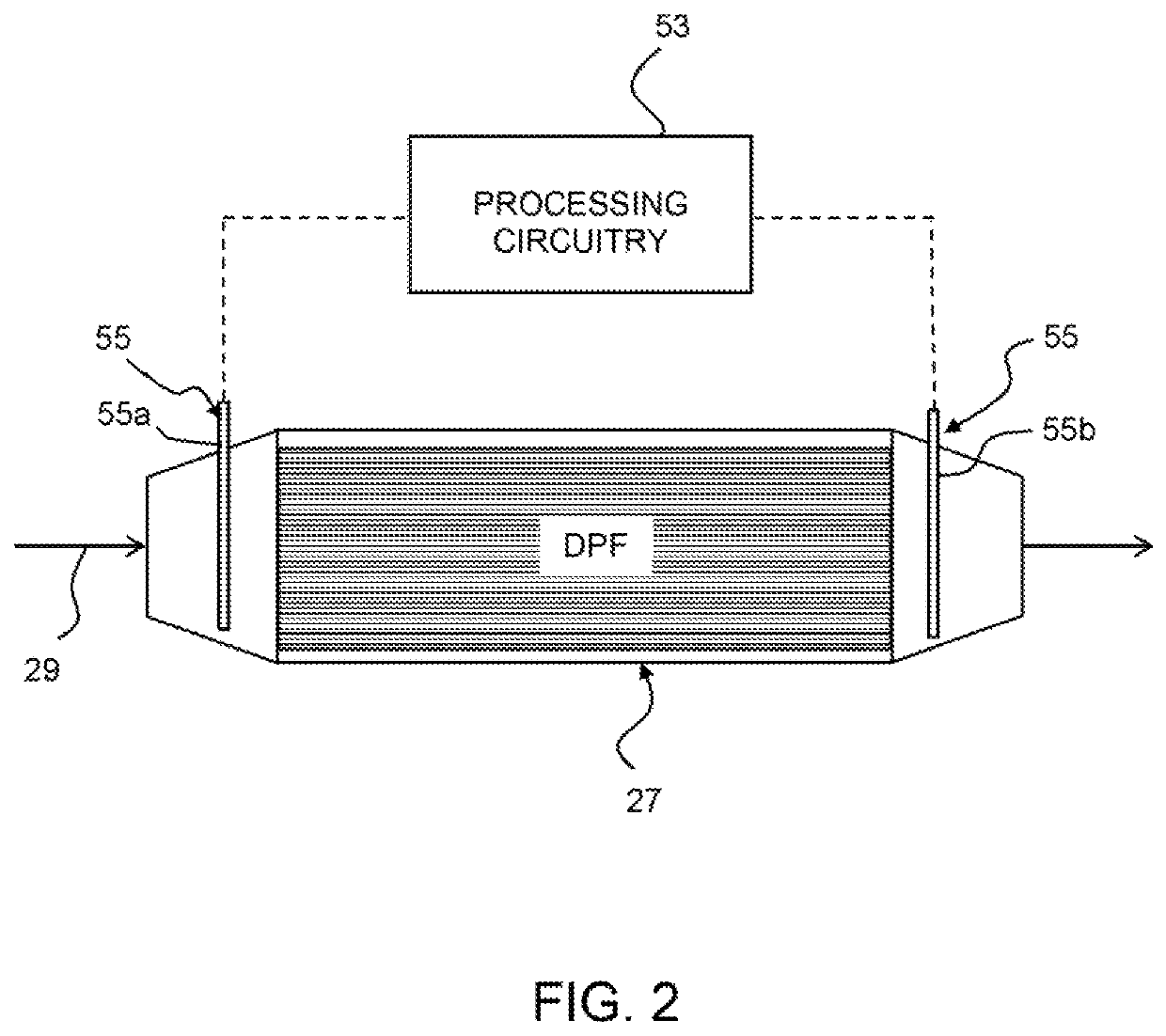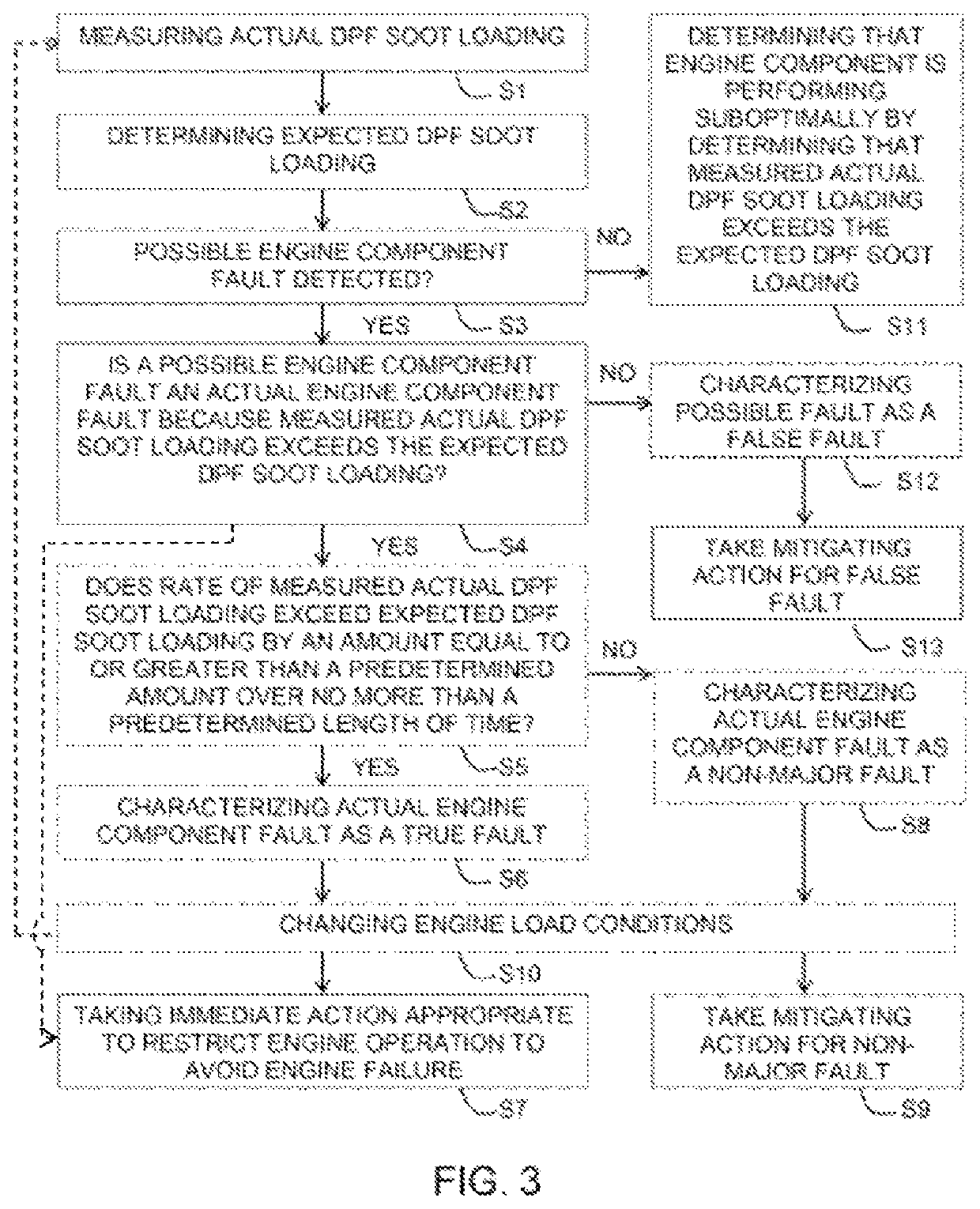Method and system for assessing engine faults
a diesel engine and fault technology, applied in the direction of machines/engines, electrical control, exhaust treatment electric control, etc., can solve the problems of not properly accounting for the type of load, most techniques for measuring soot loading in a dpf, dpf, etc., to reduce the amount of available air, and generate high soot levels
- Summary
- Abstract
- Description
- Claims
- Application Information
AI Technical Summary
Benefits of technology
Problems solved by technology
Method used
Image
Examples
Embodiment Construction
[0017]A system 21 for assessing engine faults is shown in FIG. 1. The system 21 is used in conjunction with a diesel engine 23 comprising an exhaust after-treatment system 25 (EATS) that includes a DPF 27 in an exhaust line 29 downstream of the engine. The EATS 25 will ordinarily include other components, as well, such as a diesel oxidation catalyst 57 (DOC) and a selective catalytic reduction catalyst 59 (SCR). It is presently anticipated that the system will be primarily of use for assessing the severity of functional faults relating to the functioning of components involved in combustion, such as, but not limited to, functioning of compressors 31a (such as in a variable geometry turbocharger 33 comprising an associated turbine 31b in the exhaust line 29) for providing boost pressure in an intake line 35 upstream of the engine 23, fuel injectors 37 for providing fuel to cylinders 39 of the engine, timing of opening of cylinder intake valves 41 and cylinder exhaust valves 43 for co...
PUM
 Login to View More
Login to View More Abstract
Description
Claims
Application Information
 Login to View More
Login to View More - R&D
- Intellectual Property
- Life Sciences
- Materials
- Tech Scout
- Unparalleled Data Quality
- Higher Quality Content
- 60% Fewer Hallucinations
Browse by: Latest US Patents, China's latest patents, Technical Efficacy Thesaurus, Application Domain, Technology Topic, Popular Technical Reports.
© 2025 PatSnap. All rights reserved.Legal|Privacy policy|Modern Slavery Act Transparency Statement|Sitemap|About US| Contact US: help@patsnap.com



